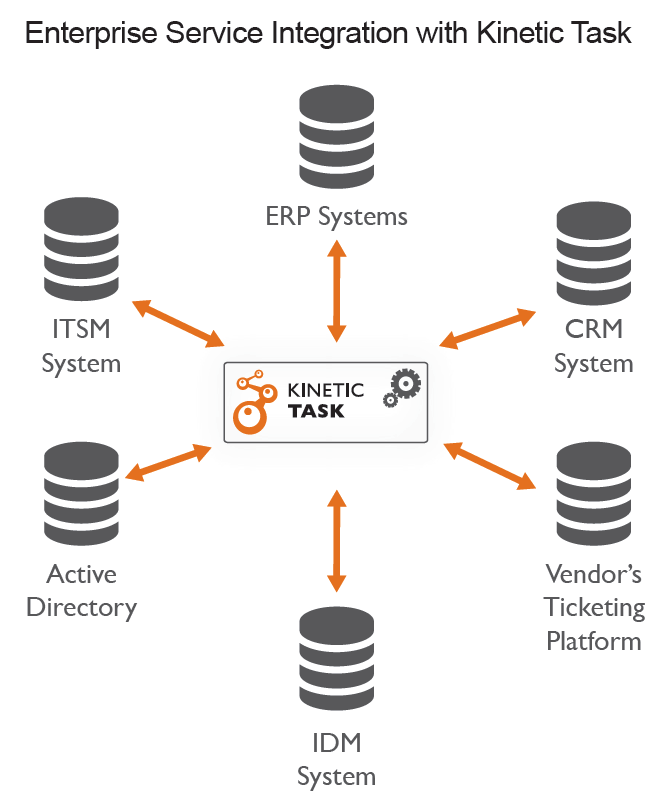In today’s complex technology landscape, organizations are challenged to consistently improve service delivery while reducing costs. The competitive marketplace requires enterprises to have the agility to address changing business needs quickly and effectively.
 Shared-service models are the corporate norm in efforts to scale service delivery models. These shared service groups (e.g., HR, facilities, finance, operations, and IT) are using large-scale software systems designed to handle specialized requirements while meeting compliance and regulatory needs.
Shared-service models are the corporate norm in efforts to scale service delivery models. These shared service groups (e.g., HR, facilities, finance, operations, and IT) are using large-scale software systems designed to handle specialized requirements while meeting compliance and regulatory needs.
There is an evolving demand for integrated automation strategies to provide key business services across the enterprise. It’s not just about integrating data, it’s about delivering effective service.
A new white paper from Kinetic Data, Enterprise Service Integration with Kinetic Task, explains why service integration is a better approach than data integration, and outlines how the Kinetic Task automation engine enables service integration across the enterprise in a scalable, flexible, and manageable manner.
Long gone are the days of “single vendor” solutions for management and control across the enterprise. Organizations today utilize specialized applications for finance and accounting, HR, IT service management, supply chain management, and other functions. These applications not only come from different vendors, but often run on different operating systems, on different hardware, on-premises or in the cloud.
Point-to-point data integration is one approach to connecting applications, but is difficult to scale and nightmarish to maintain.
Allowing specialized applications to be used in a service-oriented architecture (SOA) is widely regarded as a better approach. By providing a centralized hub for service design and integration, companies benefit in several ways. Integrations are now manageable, centralized, and standardized across the enterprise. Not only can data be integrated across systems, but approvals, notifications, and messaging can be centrally managed via a workflow automation engine.
Kinetic Task can connect to any application or database to extend the benefits of BPA to any processes across the enterprise. The engine is designed to be extended not only to COTS systems but to any system that can communicate via common methodologies such as APIs, Web Services, REST, or SOAP. This strategy applies to both triggering systems and systems involved in the fulfillment or completion of the process.
Download the white paper Enterprise Service Integration with Kinetic Task to learn more.
